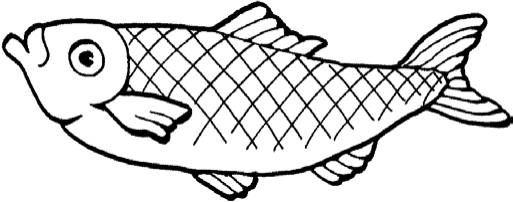Mailing Alaska Fish
FNH-00230 View this publication in PDF form to print or download.
by Julie Cascio
Mailing Alaska fish is an opportunity to share our great natural resources with friends and family. Mailing fish can be risky, but the following suggestions will help keep fresh and smoked fish safe to eat.
Packaging Fish
Package fresh raw or smoked fish in durable, freezer-safe wrapping materials. Freezer safe materials may include plastic freezer wrap, plastic freezer bags, freezer paper and heavy-weight aluminum foil.
NOTE: Vacuum sealing is a method that takes the air out as it tightly seals the package. This is a packaging method. Vacuum packaging does not preserve food.
Vacuum packaging fish (smoked or raw) plus warm temperatures can equal botulism. Botulism is a type of food poisoning that can kill people. So, for safety’s sake, keep the fish cold!
Always place vacuum-packaged fish,* smoked or raw, in the refrigerator or freezer.
Storing Fish
Refrigerate fish below 38°F for short term storage — no longer than five days. This includes raw and smoked fish in vacuum sealed bags or other packages.
Freeze fish at 0°F or lower for long term storage — longer than five days. Thaw opened packages in the refrigerator.
Mailing Fish
Raw or smoked fish should be packaged and frozen before mailing. To send fish in the mail, follow these steps:
- Label packaged fish with the name of the product and the date. Freeze tightly packaged fish at 0°F or lower, until it is frozen solid.
- Choose an insulated foam cooler container that has 1½-inch-thick walls. It should be large enough to hold the product and the refrigerant (frozen gel packs or dry ice**).
- Place the solidly frozen, packaged fish inside another plastic bag. This is to catch any drips if the fish thaws.
- Place gel packs or dry ice** in the bottom of an insulated foam cooler. Place frozen, packaged fish on top of the gel packs or dry ice. Add frozen gel packs or dry ice as a top layer above the fish.
- Fill all empty spaces with lightly wadded newspaper or paper towels to avoid shifting during transport and to absorb any excess moisture.
- Place the lid on the insulated cooler.
- Tape a note to the cooler that says, “The fish should arrive frozen or partially frozen with ice crystals still visible. It should be below 38°F as measured with a food thermometer. Even if it is smoked, cured, vacuum-packed and/ or fully cooked, it is still a perishable product and must be kept cold. If perishable food arrives warm — above 38°F — do not eat! Throw it away. If you have any doubts about the safety of this food, toss it.”
Smoked Salmon Dip
- ½ pound smoked salmon
- 1 pint small curd cottage cheese
- 1 pint sour cream
- 16 ounces cream cheese, softened
- ½ tablespoon minced garlic
- ½ tablespoon Worcestershire sauce
Blend all ingredients except salmon in mixer at medium speed until well blended. Flake salmon by hand and fold into dip. Enjoy!
A Gift For You

To________________________________
From _____________________________
- Place the insulated container inside a cardboard box.
- Close and securely tape the box with two-inch-wide tape. Use clear or brown packaging tape, reinforced packing tape or paper tape. Apply tape to all flaps and seams.
- Label the box clearly. Make sure the “ship to” address is complete and correct. Mark “Perishable — Keep Refrigerated” on the outside of the box. Dry ice is considered a hazardous material.** Add labels required when mailing dry ice. Complete any paperwork the carrier requires.
- Send by overnight or next-day service.
* Home-style vacuum packages may break if fish are commercially flash-frozen in them.
** Dry ice (carbon dioxide solid) is considered a hazardous material for air transport and requires special handling. Dry ice must never be placed in an airtight container. When dry ice changes to carbon dioxide gas in enclosed spaces it displaces oxygen. Packaging used for dry ice shipments must allow the gas to escape. When handling dry ice don’t touch it with bare hands. Also, do not let dry ice come in direct contact with food.
Check with your shipping company in advance for their current rules on shipping with dry ice.
When shipping with dry ice, provide the following on the outer packaging:
- “Dry Ice” or “Carbon Dioxide Solid.”
- “UN 1845.”
- Net weight of dry ice in kilograms.
- Name and address of the shipper.
- Name and address of the recipient.
Other Hints
- Alert the recipient that a perishable gift is in the mail so someone can be home to receive it.
- Do not send perishable products to business addresses or where there will not be adequate refrigerator storage.
- Send packages at the beginning of the week so they do not sit in the post office or mailing facility over the weekend.
Storing Your Fish
Refrigerate fish below 38°F for short-term storage — no longer than five days. This includes raw and smoked fish in vacuum-sealed bags or other packages.
Freeze fish at 0°F or lower for long-term storage — longer than five days. Thaw opened packages in the refrigerator.
Your fish should arrive frozen or partially frozen with ice crystals still visible. It should be below 38°F as measured with a food thermometer. Even if it is smoked, cured, vacuum-packed and/or fully cooked, it is still a perishable product and must be kept cold. If perishable food arrives warm — above 38°F — do not eat! Throw it away. If you have any doubts about the safely of this food, toss it.
NOTE: Vacuum sealing is a method that takes the air out as it tightly seals the package. This is a packaging method. Vacuum packaging does not preserve food. Always place vacuum packaged fish, smoked or raw, in the refrigerator.
Julie Cascio, Extension Faculty, Health, Home and Family Development
Reviewed October 2024
